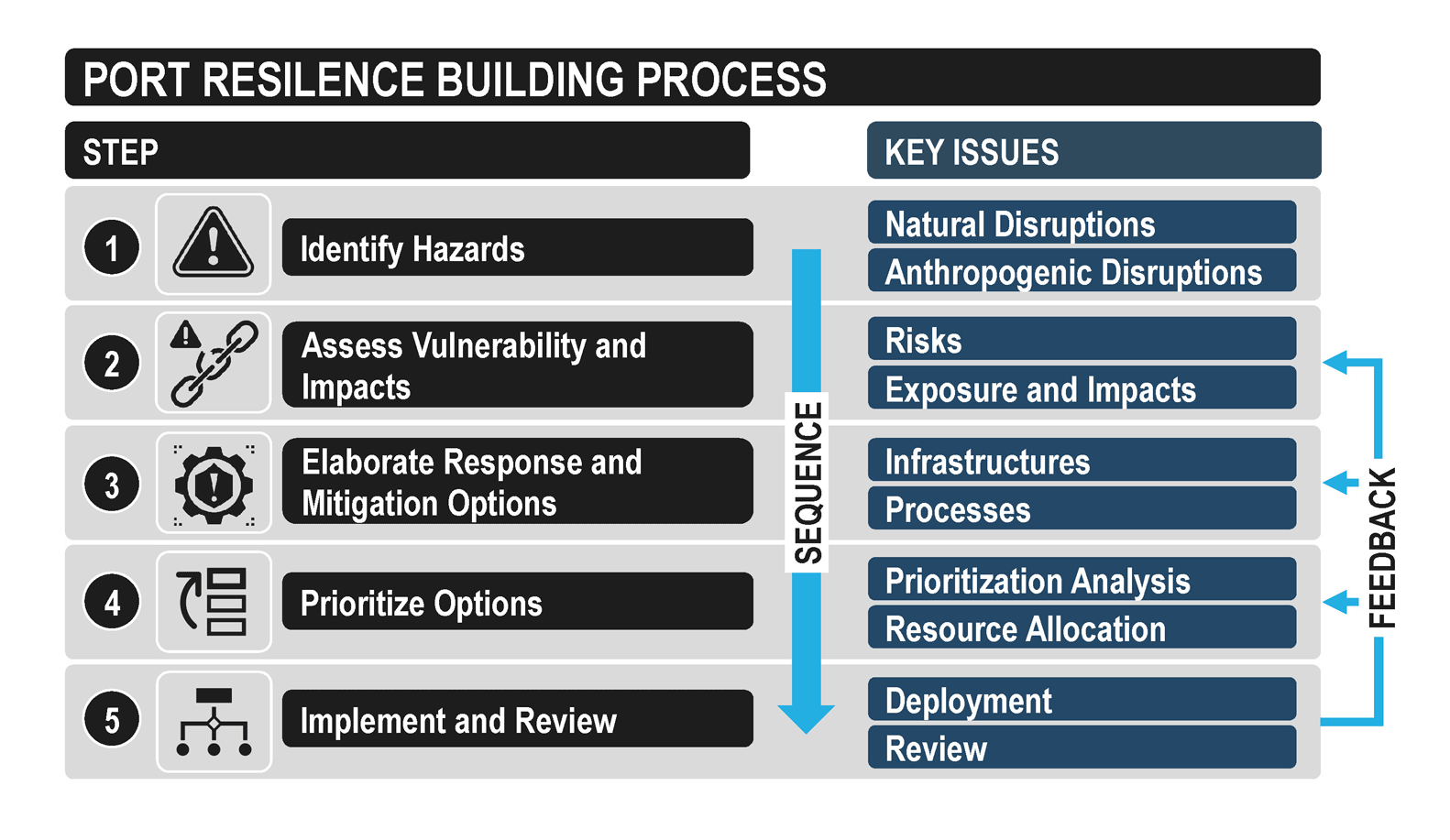An overview of port-related supply chain disruptions, including the COVID-19 pandemic, emphasized the position of ports as single points of failure with significant ramifications upstream (i.e. a shipping network) and downstream (i.e. a port’s hinterland). Depending on their nature, disruptions imply costs and delays for ports, port operators, port users (e.g. cargo owners), and inland carriers (e.g. railways, barges, trucking). Ports and their users make decisions and take actions that can enable or undermine its resilience. The cost implications of disruptions at a port are such that there is a substantial return to be made on appropriate resilience investments.
Port resilience starts with the commitment of its management. Several elements need to be considered by a port to create resilient practices, including its governance capabilities, which can minimize known risks and scan the horizon for emerging threats and opportunities. An appropriate governance structure and relevant support is key to developing commitment and assigning ownership and accountability for port risk management. Emphasis should also be placed on the value of appropriate and controlled risk-taking, which is essential to developing a risk culture in ports. Further, responsibilities must be allocated and authority delegated.
Most risk management frameworks and systems are only designed to manage ‘slow risk clock speed’ risks. While information needed is sufficient and available before the extreme event, most extreme events, will not fit into this category. As a result, ports also need a ‘fast risk clock speed’ perspective and understanding when managing risks. Ports need to be able to address the various types of risk problems and protect themselves from reputational damage.
Devising and implementing a strategy to enhance preparedness and port resilience in the face of disruptive events requires at least five action-oriented steps, involving (figure 12):
- Identifying hazards from a wide range of natural and anthropogenic disruptions that are specific to the port being considered.
- Assessing vulnerability and potential impacts by identifying port-specific risks, levels of exposure to risks, and the potential consequences of a hazard.
- Elaborating response and mitigation measures involving port infrastructure and processes related to port management and operations. These measures can aim for prevention and preparedness (before the event), or be responsive and adaptive (after the event), with both aiming to speed up the port activity recovery.
- Prioritizing response and mitigation measures that had been elaborated using prioritization analysis, such as cost-benefit analysis and resource allocation for finance, labour and other resources. This step will help to focus on the most important strategies.
- Implementing response and mitigation measures that have been prioritized and elaborated through their deployment across the port ecosystem. Once these measures have been implemented, a review process should follow to assess their effectiveness and make any requisite adjustments that may be required.
Figure 12: Port resilience-building process: A stepwise approach

These above-mentioned steps for port resilience building set out a generic framework that can be tailored and adapted to the existing context of ports, depending on the size and profile of the port and the development stage of the countries involved. Each port tends to have a different geographical, economic, political and managerial context, their risks categories and exposure as well as their ability to cope and respond to disruptions, are also likely to vary. The most common questions and concerns involve:
- Which risks should be prioritized from a port’s perspective.
- Which stakeholder has responsibility for adopting response measures to mitigate impacts, adapt and recover from disruptions.
- Which actor should be involved in case of a specific disruptive event, this would allow for the implementation of stakeholder developed plans and strategies.
- What are the costs of response and mitigation measures and implementation timelines.
- How outcomes reviewed, and how are the lessons learned integrated into the resilience-building process.
